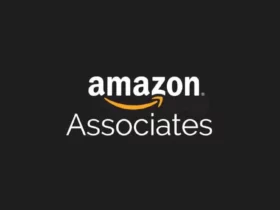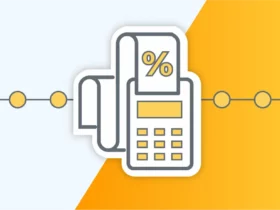As an Amazon customer, I want to know that the products I purchase are authentic and safe. That’s where Amazon Transparency comes in. This program helps protect brands and customers from counterfeit products by ensuring that every unit shipped is authentic. With Transparency, Amazon is taking proactive measures to prevent counterfeit products from entering the market.
Transparency works by assigning a unique code to each unit of a product. This code is then used to track the product throughout the supply chain, from the manufacturer to the customer. Customers can use the Transparency app to scan the code and verify that the product they received is authentic. This program has been successful in protecting more than 10,000 brands and over 500 million product units. If you’re a brand owner, Transparency can help you protect your intellectual property and build trust with your customers.
Understanding Amazon Transparency
As a seller on Amazon, it is essential to protect your brand and ensure that your customers receive authentic products. Amazon Transparency is a program that helps sellers achieve this goal by using unique codes to identify each unit of a product. Here’s what you need to know about Amazon Transparency:
- Amazon Transparency is a product serialization service that allows Amazon to authenticate each item before it is shipped to the customer. It was introduced in 2017 to combat the growing threat of counterfeit products on the platform.
- The program requires sellers to enroll their products and apply a scannable 2D barcode label to the packaging. Amazon fulfillment personnel scan the label to ensure that the product is authentic before it is shipped to the customer.
- The Transparency app is available for sellers to monitor their enrolled products. The app allows sellers to track their products’ authenticity and performance, including how many units have been scanned and how many have been returned.
- The program is not free. Sellers pay a fee per unit for each enrolled product. However, the benefits of the program, including increased customer trust and protection against counterfeit products, can outweigh the cost.
- Over 10,000 brands, from Fortune 500 companies to startups and small businesses, have already enrolled in the program. By enrolling in Amazon Transparency, sellers can differentiate themselves from competitors and protect their brand reputation.
Overall, Amazon Transparency is an effective way for sellers to protect their brand and ensure that their customers receive authentic products. By enrolling in the program, sellers can increase customer trust, differentiate themselves from competitors, and protect their brand reputation.
Benefits for Brands
As a brand, enrolling in Amazon Transparency can bring several benefits that can help protect your authenticity, enhance your customer experience, and boost your profits.
Protecting Authenticity
One of the main benefits of Amazon Transparency is that it helps protect your brand’s authenticity. By using unique codes to identify every unit, Transparency ensures that only genuine products are shipped to customers. This helps prevent counterfeit products from reaching customers, which can damage your brand’s reputation and lead to potential legal issues. With Transparency, you can have peace of mind knowing that your customers are receiving authentic products.
Enhancing Customer Experience
Enrolling in Amazon Transparency can also enhance your customer experience. By providing customers with transparent information about the origins of your products, you can build trust with your audience and improve overall satisfaction. Customers want to know that they are getting what they paid for, and Amazon Transparency can help you deliver on that promise. Additionally, Transparency can help reduce the number of customer complaints related to counterfeit products, which can further improve your brand’s reputation.
Boosting Profits
Finally, Amazon Transparency can also boost your profits. By protecting your brand’s authenticity and enhancing your customer experience, you can increase customer loyalty and drive sales. Customers are more likely to purchase from brands that they trust, and by enrolling in Transparency, you can build that trust with your audience. Additionally, Transparency can help reduce the costs associated with counterfeit products, such as legal fees and lost revenue. By protecting your brand, you can increase your profits and grow your business.
Overall, enrolling in Amazon Transparency can bring several benefits for brands, including protecting authenticity, enhancing customer experience, and boosting profits. By using unique codes to identify every unit, Transparency can help prevent counterfeit products from reaching customers, build trust with your audience, and increase sales. As a brand, enrolling in Transparency is a great way to protect your business and grow your brand.
The Role of Unique Codes
As a seller, I understand the importance of providing authentic products to my customers. Amazon’s Transparency Program offers a solution to this problem by using unique codes to verify the authenticity of each unit. In this section, I will discuss the role of unique codes in the Transparency Program, specifically GTIN and UPC codes and the unique Transparency code.
GTIN and UPC
GTIN (Global Trade Item Number) and UPC (Universal Product Code) are standard product identification codes used by manufacturers to identify their products. These codes are required to participate in the Transparency Program. As a seller, I must provide these codes for each product I enroll in the program.
Unique Transparency Code
In addition to GTIN and UPC codes, each unit enrolled in the Transparency Program is assigned a unique Transparency code. This code is applied to the product or its packaging, allowing Amazon to inspect and authenticate each unit proactively. The unique code also provides valuable insights to help optimize supply chains.
By using unique codes, Amazon can ensure that only authentic units are shipped to customers, preventing counterfeits from reaching the market. As a seller, I am proud to participate in the Transparency Program and provide my customers with authentic products.
Enrollment Process
Enrolling in the Amazon Transparency Program is a simple and straightforward process. As a brand owner, I can enroll in the program to protect my products from counterfeiting and ensure that my customers receive only authentic products. Here’s how I can enroll in the program:
- Create a Transparency Account: I can create a Transparency account by visiting the Amazon Transparency website. I will need to provide my brand information, such as my company name, address, and contact information.
- Enroll My Products: Once I have created my Transparency account, I can enroll my products in the program. I will need to provide the product information, such as the product name, UPC, and SKU. I can enroll as many products as I want.
- Apply Transparency Codes: After enrolling my products, I will need to apply Transparency codes to each unit. These codes are unique to each unit and are used to ensure that only authentic products are shipped to customers. I can apply the codes myself or use a third-party service provider.
- Ship My Products: Once I have applied the Transparency codes, I can ship my products to Amazon fulfillment centers. Amazon will scan the codes to ensure that only authentic products are shipped to customers.
By enrolling in the Amazon Transparency Program, I can protect my brand and my customers from counterfeiters. The program provides several benefits, including:
- Protecting my brand’s reputation by ensuring that only authentic products are sold on Amazon.
- Providing customers with a way to verify the authenticity of their products.
- Reducing the risk of lost sales due to counterfeit products.
- Increasing customer trust and loyalty.
Overall, enrolling in the Amazon Transparency Program is a simple and effective way to protect my brand and my customers from counterfeiters.
Amazon’s Global Reach
As a global company, Amazon has implemented its Transparency program in various regions around the world. Here’s a breakdown of how Transparency works in North America, Europe, and the Asia-Pacific region:
Transparency in North America
In North America, Transparency is available in both the United States and Canada. Brands that enroll in the program are assigned a unique Transparency code that is printed on each unit of their products. When a customer receives a product, they can use the Transparency app to scan the code and verify that the product is authentic. Amazon checks each code to ensure that the product is legitimate before it is shipped to the customer.
Transparency in Europe
Amazon’s Transparency program is available in several European countries, including France, Germany, Italy, Spain, and the United Kingdom. Similar to North America, brands are assigned a unique Transparency code that is printed on their products. Customers can use the Transparency app to scan the code and verify the authenticity of the product.
Transparency in Asia-Pacific
In the Asia-Pacific region, Transparency is available in India, Japan, and Australia. Brands that enroll in the program are assigned a unique Transparency code that is printed on their products. Customers can use the Transparency app to scan the code and verify that the product is authentic.
Amazon’s Transparency program is a global service, which means that once a brand enrolls in the program, they can use it in any region where it is available. This makes it easy for brands to protect their products from counterfeiting and ensure that their customers are receiving authentic products, no matter where they are located.
Counteracting Counterfeits
As a responsible retailer, Amazon takes the issue of counterfeits very seriously. Counterfeit products not only harm customers by providing subpar quality, but they also harm legitimate sellers who lose business to counterfeiters. That’s why Amazon has implemented several measures to prevent the sale of counterfeit goods on its platform.
One of the key measures is the Amazon Transparency program. This program helps identify individual units of a product and proactively prevents counterfeits from reaching customers. The program assigns a unique serial number to each product unit, which can be scanned by customers to verify product authenticity. This ensures that only authentic units are shipped to customers.
In addition to the Transparency program, Amazon has established its Counterfeit Crimes Unit to build and refer cases to law enforcement, undertake independent investigations or joint investigations with brands, and pursue civil litigation against counterfeiters. This unit works tirelessly to protect customers, brands, and Amazon’s store from counterfeit products.
Amazon also has robust proactive controls in place to prevent the sale of counterfeit goods. These controls include machine learning and automated systems that scan product listings and proactively remove suspected counterfeit products. Amazon also requires sellers to provide detailed product information, including the manufacturer’s name and address, to help verify the authenticity of products.
To further combat counterfeits, Amazon works closely with brands to ensure that they have the tools and resources they need to protect their intellectual property. This includes providing brand owners with access to tools to report suspected counterfeit products and to request the removal of infringing listings.
Overall, Amazon is committed to ensuring that customers can shop with confidence on its platform. By implementing measures such as the Transparency program, the Counterfeit Crimes Unit, and proactive controls, Amazon is working to prevent the sale of counterfeit goods and protect both customers and legitimate sellers.
The Role of Technology
As an Amazon seller, I understand the importance of transparency in building trust with customers. Technology plays a vital role in achieving this transparency. In this section, I will discuss two technologies that Amazon uses to promote transparency: the mobile app and machine learning.
Mobile App
The Amazon mobile app allows customers to scan a product’s barcode to verify its authenticity through the Transparency program. This feature helps customers to identify counterfeit products and ensures that only authentic units are shipped to customers. The app also provides customers with valuable insights into the product, such as its origin, manufacturing date, and expiration date. This information helps customers to make informed purchasing decisions and promotes transparency in the supply chain.
Machine Learning
Machine learning is another technology that Amazon uses to promote transparency. By analyzing vast amounts of data, machine learning algorithms can identify patterns and anomalies in the supply chain. For example, machine learning algorithms can detect counterfeit products by analyzing product reviews, sales data, and other metrics. This technology helps Amazon to prevent counterfeit products from reaching customers and promotes transparency in the supply chain.
In conclusion, technology plays a crucial role in promoting transparency in the Amazon marketplace. The mobile app and machine learning are just two examples of how Amazon is leveraging technology to build trust with customers. As an Amazon seller, I understand the importance of transparency in building long-term relationships with customers, and I am committed to promoting transparency in my business.
Supporting Small Businesses and Startups
As a company that started as an online bookstore, Amazon has always had a soft spot for small businesses and startups. We know how hard it can be to get your foot in the door and build a successful business from scratch. That’s why we’ve invested tens of billions of dollars in infrastructure and built hundreds of tools to help independent sellers succeed in our store.
Our data analytics tools help independent sellers better understand and reach customers. By analyzing sales data, sellers can gain insights into what products are popular and adjust their inventory accordingly. We also offer advertising tools that help sellers promote their products to a wider audience.
In addition to providing tools and resources, we also offer programs that help small businesses and startups get off the ground. For example, our Amazon Launchpad program helps startups launch and market their products to millions of Amazon customers. We also have a Small Business Academy that offers a suite of free resources for entrepreneurs, including webinars, podcasts, and how-to guides.
We understand that small businesses and startups are the backbone of the American economy. That’s why we’re committed to supporting them in any way we can. Whether it’s through our tools, programs, or partnerships, we’re always looking for ways to help small businesses and startups succeed.
Amazon’s Policies and Tools
As a company committed to transparency, Amazon has developed policies and tools to protect brands and customers from counterfeits. In this section, I’ll discuss two of these tools: Brand Registry and Selling Partners.
Brand Registry
Brand Registry is a program that helps brand owners protect their registered trademarks on Amazon. By enrolling in Brand Registry, brand owners gain access to a suite of tools designed to help them protect their intellectual property and prevent counterfeits from being sold on Amazon.
Some of the benefits of Brand Registry include:
- Access to powerful search tools that can help brand owners find and report suspected counterfeits.
- The ability to create and manage product listings for your brand.
- Enhanced brand content features that can help you create a more engaging and informative product detail page.
- Increased control over your brand’s product listings, including the ability to update product information and images.
Selling Partners
Selling Partners are third-party sellers who list their products on Amazon. Amazon has developed a number of policies and tools to help ensure that Selling Partners are selling genuine products.
One of the key tools that Amazon uses to prevent counterfeits is Transparency. Transparency is a program that uses unique codes to identify individual units and prevent counterfeits from reaching customers. When a brand enrolls in the Transparency program, Amazon requires all sellers to provide the brand’s unique Transparency codes before the products can be listed or shipped to customers.
In addition to Transparency, Amazon has developed a number of other policies and tools to help prevent counterfeits, including:
- Proactive measures to identify and remove suspected counterfeit products from the Amazon marketplace.
- A team of investigators who work to identify and stop counterfeiters.
- A policy that requires Selling Partners to provide documentation proving the authenticity of their products.
By using these policies and tools, Amazon is able to help protect brands and customers from counterfeits and maintain the trust of its customers.













